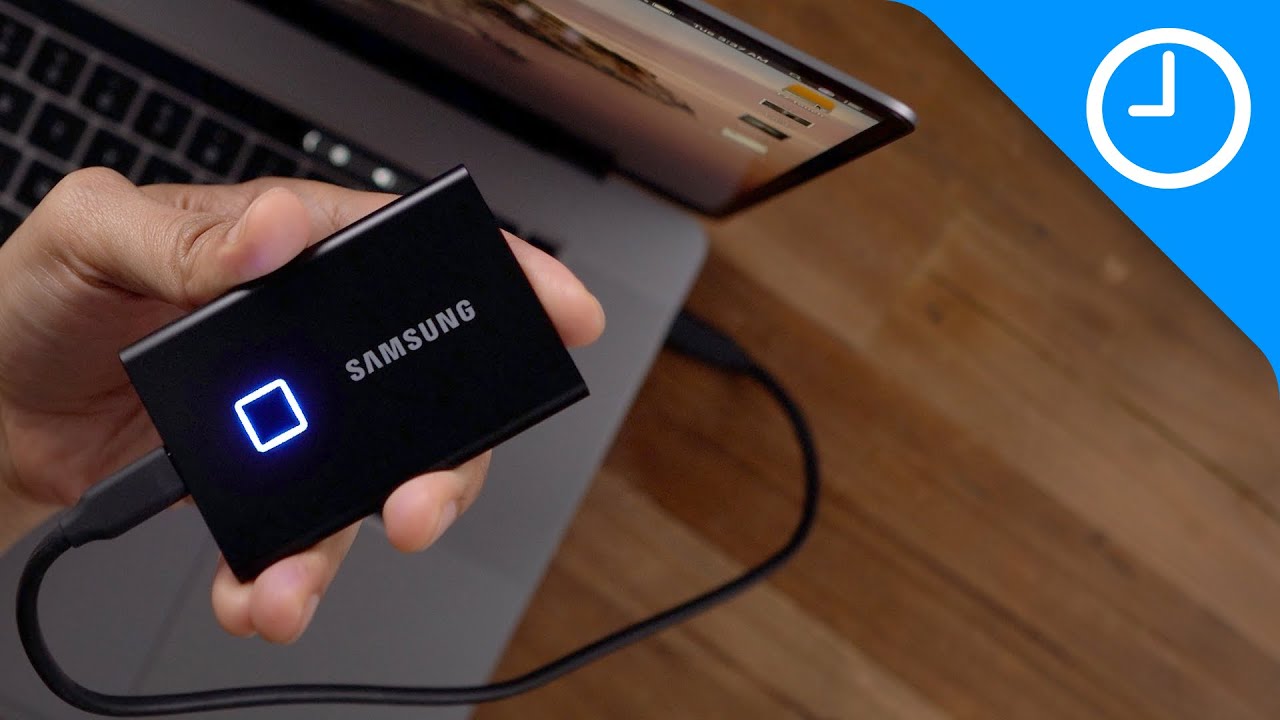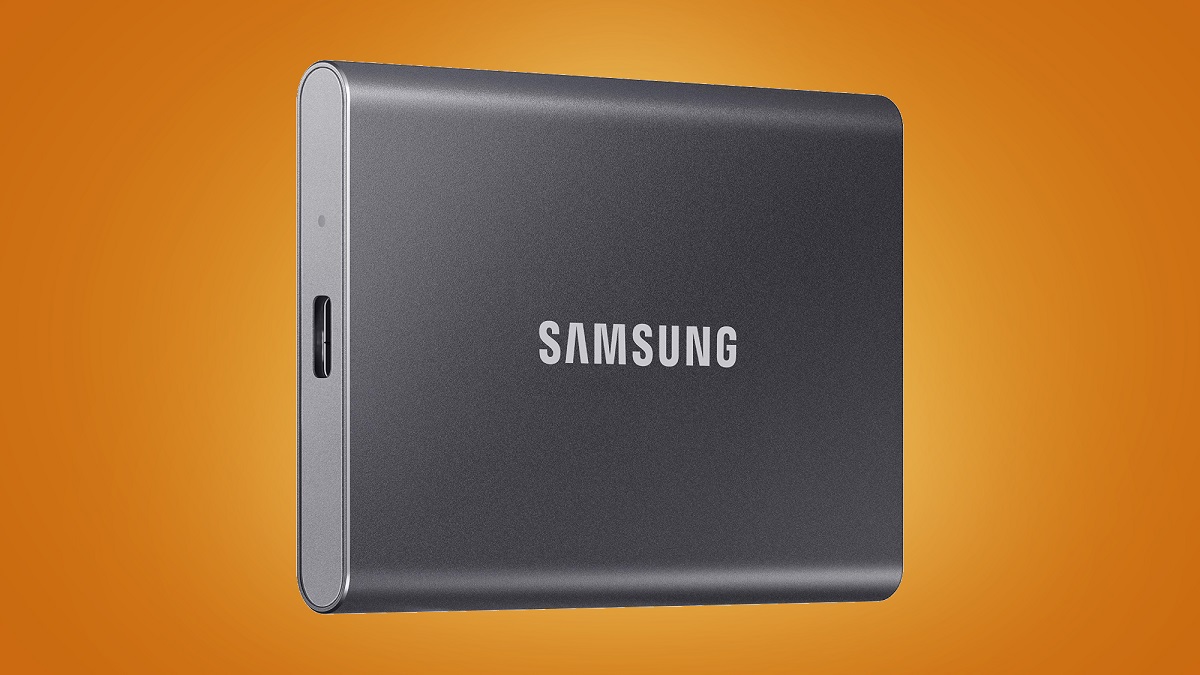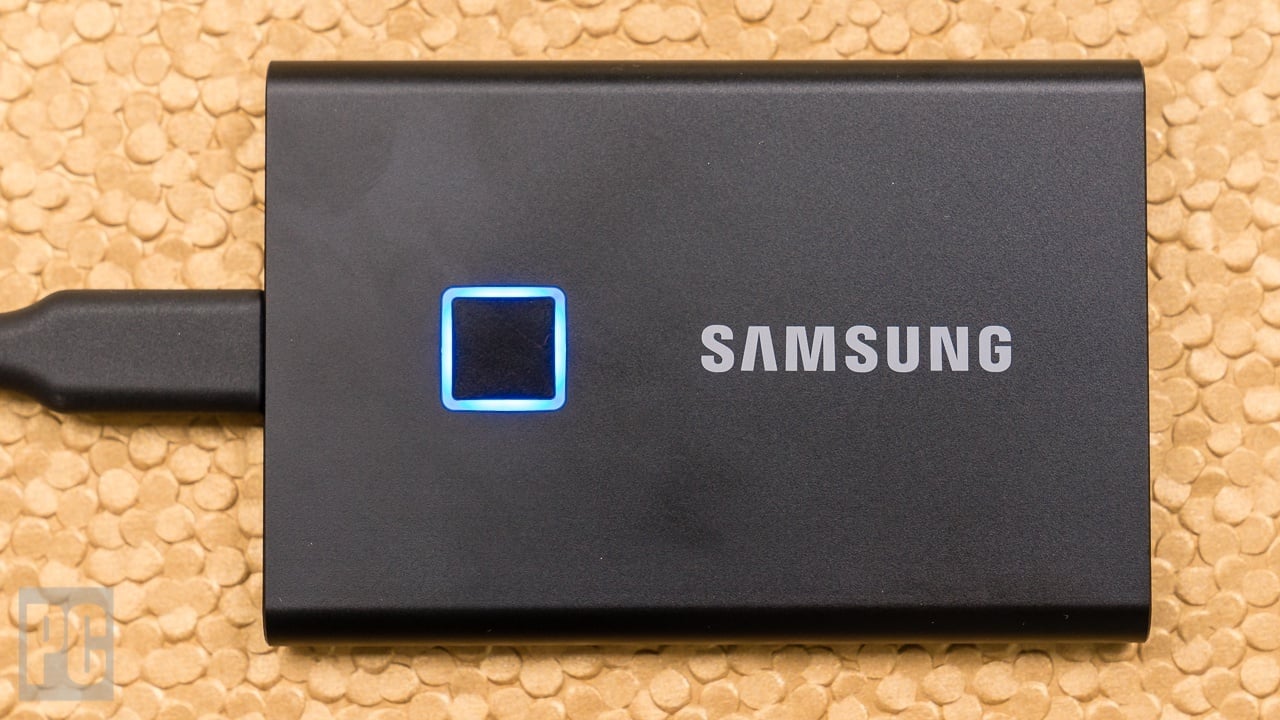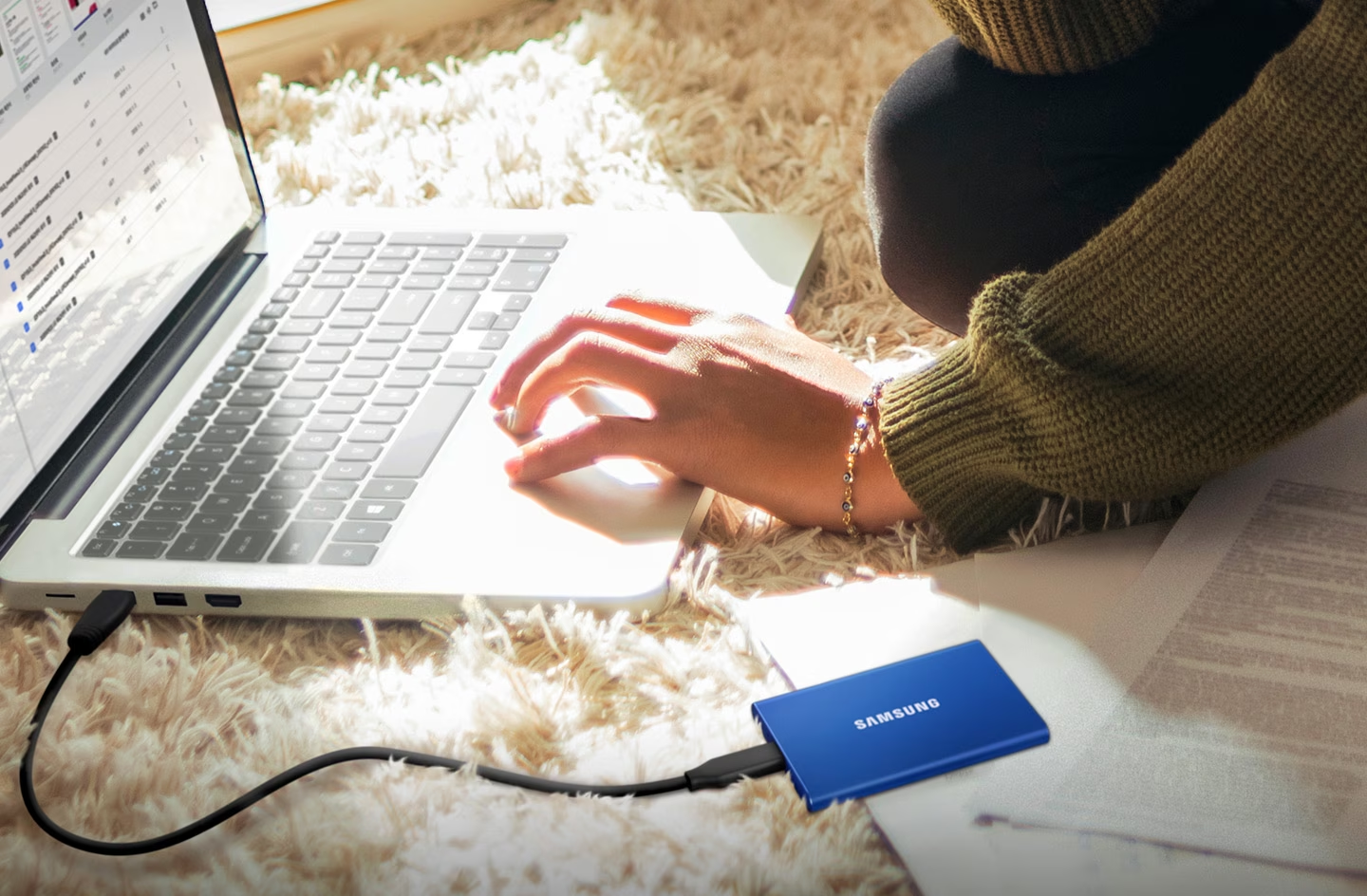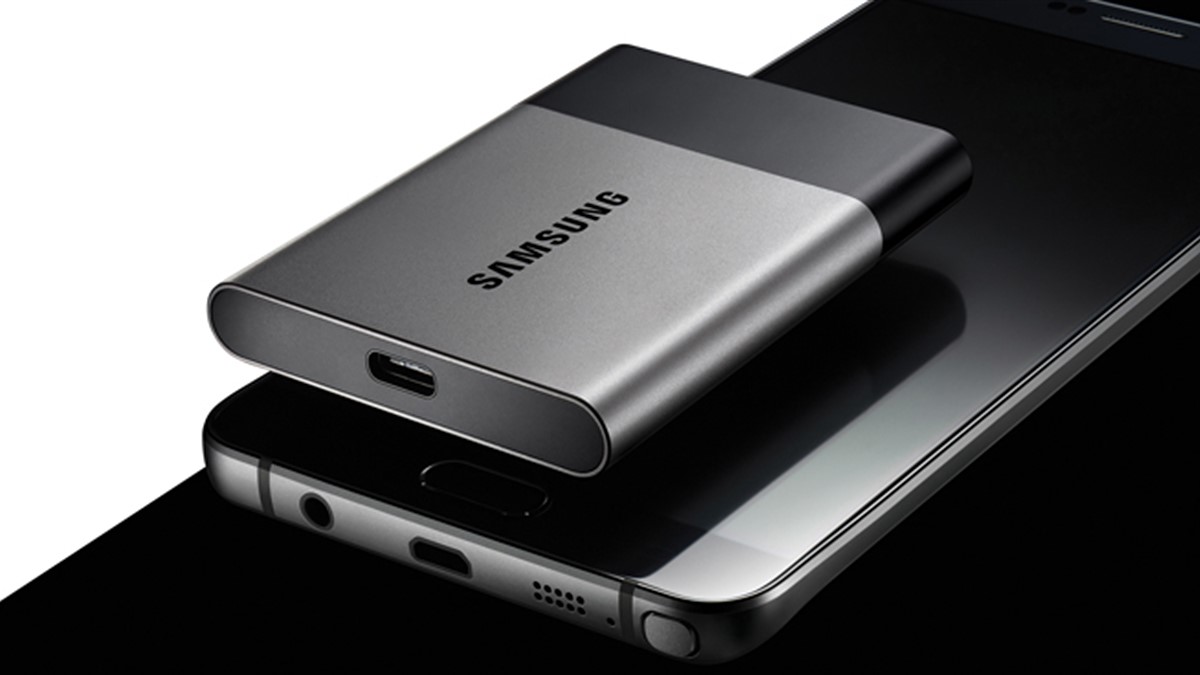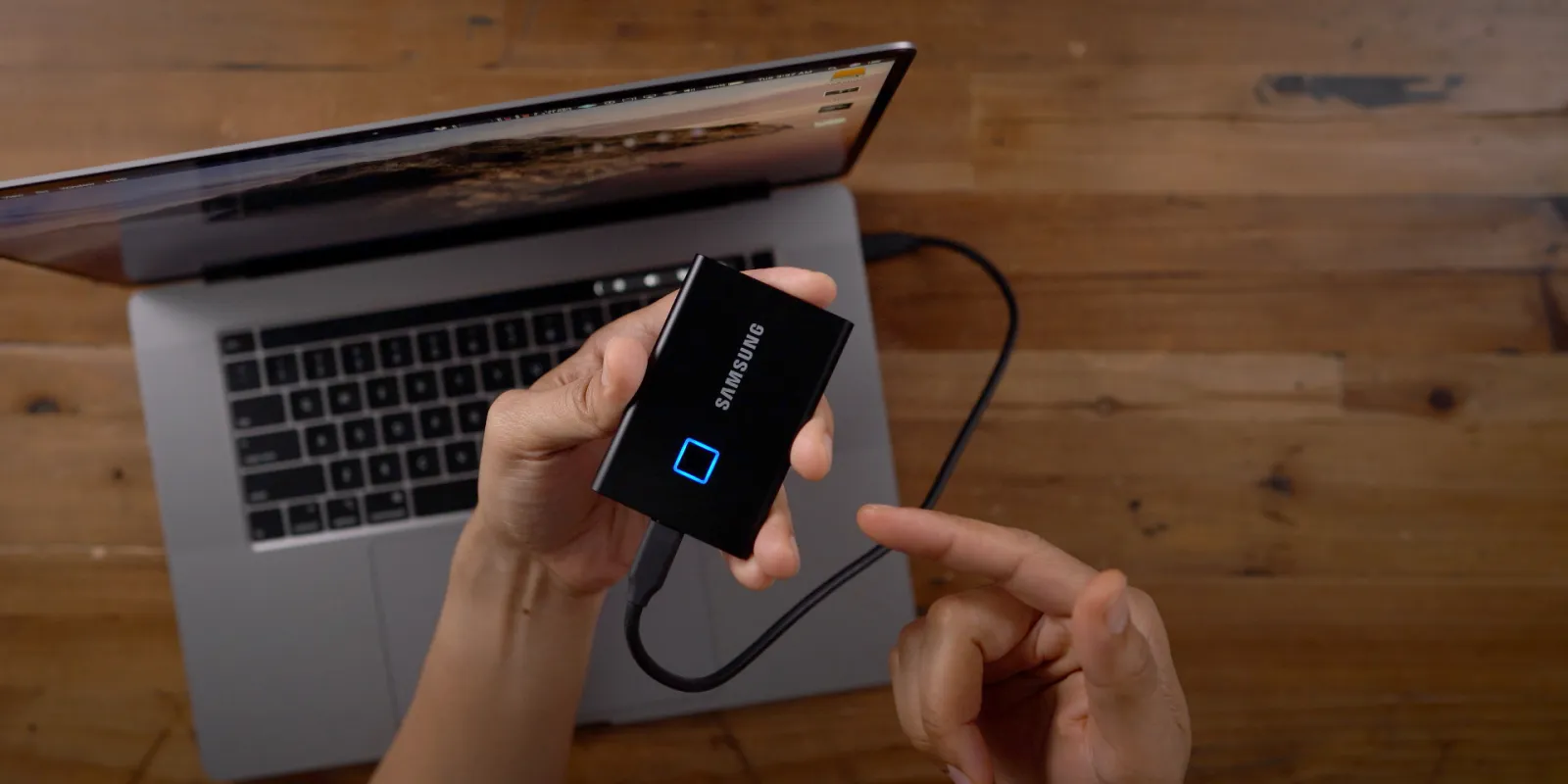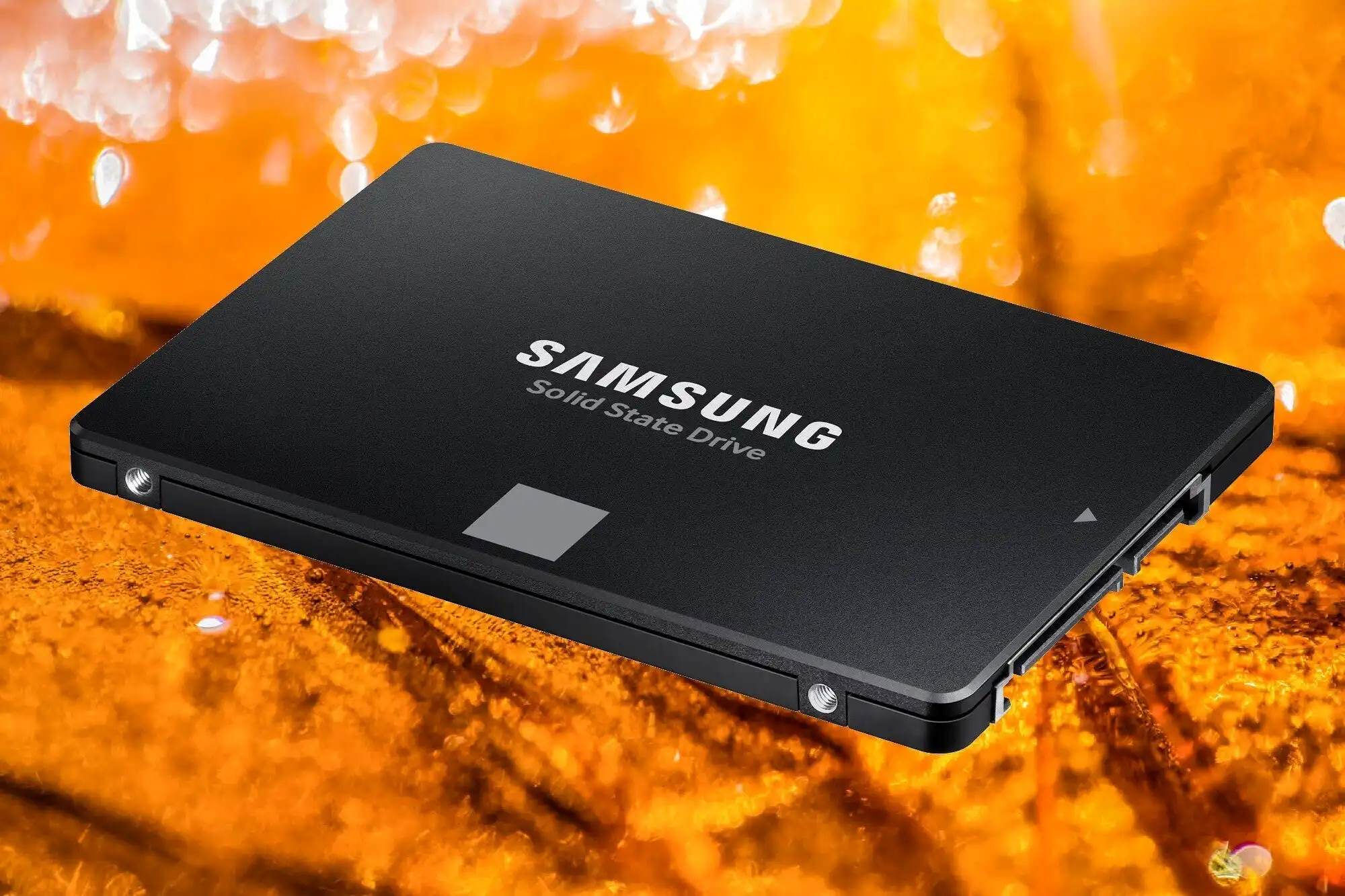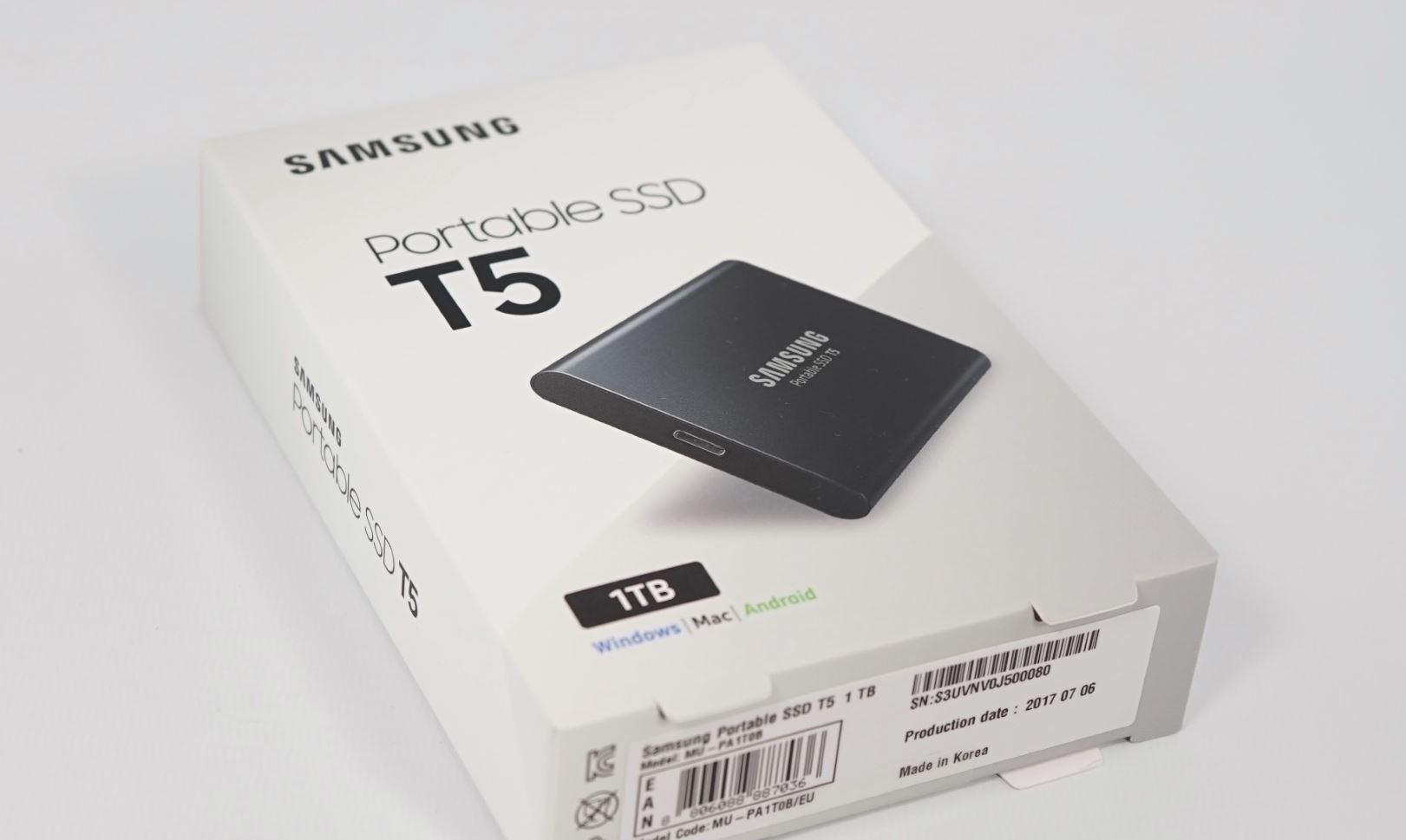Introduction
Welcome to the world of fast and portable storage with the Samsung Portable SSD T7. Whether you’re a creative professional, a student, or someone who needs to carry large amounts of data on the go, this sleek and compact SSD is here to make your life easier.
The Samsung Portable SSD T7 combines lightning-fast data transfer speeds, excellent security features, and a durable design, making it the perfect companion for anyone in need of reliable storage. With its USB 3.2 Gen 2 interface, this SSD can deliver read and write speeds of up to 1,050MB/s, ensuring that you can transfer even large files in seconds.
Not only does the Samsung Portable SSD T7 provide impressive speed, but it also prioritizes the safety of your data. With AES 256-bit encryption and password protection, you can have peace of mind knowing that your sensitive files are secure from unauthorized access.
Setting up and using the Samsung Portable SSD T7 is a breeze, thanks to its intuitive software and compatibility with various devices. Whether you’re using a Windows PC, Mac, or Android device, this SSD can easily connect and work seamlessly with your existing setup.
In this guide, we will walk you through the process of setting up, connecting, transferring data, managing files, updating firmware, and troubleshooting common issues with the Samsung Portable SSD T7. By the end of this tutorial, you’ll be a pro at using this portable powerhouse and will wonder how you ever lived without it.
System Requirements
Before getting started with the Samsung Portable SSD T7, it’s essential to ensure that your system meets the necessary requirements to utilize its full potential. Here are the minimum system requirements:
- Compatible operating system: Windows 7 or later, Mac OS X 10.10 or later, Android 5.1 or later.
- USB connection: USB 3.2 Gen 2 (10Gbps) Type-C port or USB 2.0 Type-C port. It is recommended to use a USB 3.2 Gen 2 Type-C port for optimal performance.
- Storage capacity: The Samsung Portable SSD T7 is available in different capacities, ranging from 500GB to 2TB. Choose the capacity that suits your storage needs.
- Device compatibility: Ensure that your device supports the USB connection required for the Samsung Portable SSD T7. Check the device specifications or consult the manufacturer’s documentation for confirmation.
- Software requirements: Some features and security functions of the Samsung Portable SSD T7 may require the installation of specific software. You can download the necessary software from the Samsung website.
While these are the minimum requirements, it’s always a good idea to have the latest operating system and USB drivers installed on your device for optimal performance and compatibility. Upgrading your system to the latest version is often beneficial, as it may include bug fixes and improved device support.
Now that you are aware of the system requirements, let’s move on to setting up the Samsung Portable SSD T7 and get ready to experience lightning-fast portable storage like never before.
Setting up the Samsung Portable SSD T7
Setting up the Samsung Portable SSD T7 is quick and straightforward. Follow these steps to get started:
- Remove the Samsung Portable SSD T7 from its packaging and locate the USB Type-C to Type-C cable included in the box.
- Connect one end of the USB Type-C cable to the SSD’s Type-C port and the other end to your computer’s Type-C port.
- Once connected, your computer should recognize the Samsung Portable SSD T7. If prompted, follow the on-screen instructions to install any necessary device drivers or software.
- Next, navigate to the Samsung website and download the Samsung Portable SSD Software. This software provides additional features and functionality, including firmware updates and data encryption.
- Install the Samsung Portable SSD Software following the provided instructions.
- Launch the Samsung Portable SSD Software and follow the prompts to set a password for your SSD’s security features, if desired. This password will be required to access the encrypted data on the drive.
- With the software installed and password set, you’re now ready to start using the Samsung Portable SSD T7.
It’s important to note that the Samsung Portable SSD T7 is compatible with multiple devices, including Windows PCs, Macs, and Android smartphones or tablets. However, the setup process may vary slightly depending on the operating system you’re using. For detailed instructions, refer to the user manual specific to your device.
With the Samsung Portable SSD T7 successfully set up and connected, you can now proceed to transfer your files and enjoy the fast and reliable storage solution it offers.
Connecting the Samsung Portable SSD T7
Connecting your Samsung Portable SSD T7 to your computer or device is a simple process. Follow these steps to establish a connection:
- Ensure that your computer or device is powered on.
- Locate the USB Type-C cable that came with your Samsung Portable SSD T7.
- Connect one end of the USB Type-C cable to the SSD’s Type-C port.
- Connect the other end of the USB Type-C cable to an available USB Type-C or Type-A port on your computer or device. Choose the appropriate port based on the compatibility of your device.
- Give your computer or device a moment to recognize the Samsung Portable SSD T7. It should appear as a removable storage device.
- You are now ready to access and manage the files on your Samsung Portable SSD T7. Open file explorer or a similar file management application to view the contents of the SSD.
It’s important to ensure that you connect the SSD to a compatible and functioning USB port. If you experience any issues, try using a different USB port or a different cable to rule out any potential connectivity problems.
Keep in mind that the Samsung Portable SSD T7 is designed for high-speed data transfer. To achieve the maximum performance, it is recommended to connect the SSD to a USB 3.2 Gen 2 port, if available. This will ensure the fastest data transfer speeds and optimal performance.
Now that your Samsung Portable SSD T7 is successfully connected, you can start transferring data and taking advantage of its impressive storage capabilities.
Transferring Data onto the Samsung Portable SSD T7
The Samsung Portable SSD T7 provides a convenient and efficient way to transfer your data onto its fast and reliable storage. Follow these steps to transfer your files onto the SSD:
- Ensure that your Samsung Portable SSD T7 is successfully connected to your computer or device.
- Open your file explorer or the application you typically use to manage files.
- Navigate to the location of the files you want to transfer onto the SSD.
- Select the files or folders you want to transfer. You can hold down the Ctrl or Command key to select multiple files or folders at once.
- Right-click on the selected files or folders and choose the “Copy” option.
- In your file explorer, navigate to the Samsung Portable SSD T7, which should be listed as a removable storage device.
- Right-click inside the SSD’s folder or location where you want to transfer the files and choose the “Paste” option.
- Wait for the transfer process to complete. The speed of the transfer will depend on the size of the file(s) and the capabilities of your computer and the SSD.
- Once the transfer is finished, you can safely disconnect the Samsung Portable SSD T7 from your computer or device.
It’s important to ensure that you do not disconnect the SSD while a data transfer is in progress. Doing so may result in data loss or corruption. Wait for the transfer to complete before disconnecting the SSD.
Whether you are transferring large multimedia files, documents, or a collection of photos, the Samsung Portable SSD T7’s high-speed transfer capabilities will make the process quick and efficient.
Now that you know how to transfer data onto the Samsung Portable SSD T7, you can keep your files safe, organized, and easily accessible whenever you need them.
Safely Disconnecting the Samsung Portable SSD T7
It’s crucial to follow the proper procedure for disconnecting the Samsung Portable SSD T7 from your computer or device to ensure the safety of your data and prevent any potential damage. Follow these steps to safely disconnect the SSD:
- Make sure that all file transfer operations to and from the Samsung Portable SSD T7 are complete.
- Close any applications or file explorer windows that are accessing files on the SSD.
- Look for the “Safely Remove Hardware” or “Eject” icon on your computer’s taskbar or system tray. This icon may appear as a USB plug or an upward arrow with a horizontal line below it.
- Click on the “Safely Remove Hardware” or “Eject” icon to view the list of connected devices.
- Locate the Samsung Portable SSD T7 in the list of devices and click on it.
- Wait for a notification that it is safe to remove the SSD. This notification may vary depending on your operating system.
- Once you receive the confirmation, gently disconnect the USB Type-C cable from the Samsung Portable SSD T7 and your computer or device.
- Store the SSD in a safe place, away from extreme temperatures and physical damage.
It’s important to note that abruptly disconnecting the SSD while it is still in use may result in data corruption or loss. Always ensure that you follow the proper procedure to safely disconnect the Samsung Portable SSD T7.
If you are using the Samsung Portable SSD T7 on a mobile device, such as an Android smartphone or tablet, you may need to follow additional steps to safely eject the SSD. Refer to your device’s user manual or consult the manufacturer’s documentation for specific instructions.
By following these guidelines, you can protect your valuable data and ensure the longevity of your Samsung Portable SSD T7.
Managing Files and Folders on the Samsung Portable SSD T7
The Samsung Portable SSD T7 not only provides ample storage space but also offers convenient ways to manage your files and folders. Whether you’re organizing documents, photos, videos, or any other type of content, you can easily navigate and manage your data on the SSD. Here’s how:
- Creating Folders: To keep your files organized, you can create folders on the Samsung Portable SSD T7. Right-click inside the SSD’s folder or location where you want the new folder to be and choose the “New Folder” option. Give the folder a name and press Enter.
- Moving Files and Folders: If you want to relocate files or folders within the Samsung Portable SSD T7, simply click and drag them to the desired location. Alternatively, you can right-click on the selected files or folders, choose “Cut,” navigate to the destination folder, and then right-click and choose “Paste.”
- Renaming Files and Folders: To give your files or folders new names, simply right-click on the file or folder, choose “Rename,” type in the new name, and press Enter.
- Deleting Files and Folders: If you want to remove unnecessary files or folders from the Samsung Portable SSD T7, right-click on the item you wish to delete and choose “Delete.” Confirm the deletion when prompted. Be cautious when deleting files as it is not always possible to recover them once they are deleted.
- Searching for Files: If you have a large number of files on the SSD and need to find a specific file quickly, you can use the search function. Look for the search box or magnifying glass icon, usually located in the top right corner of your file explorer window. Type in the name or a keyword related to the file you’re searching for, and the search results will display the matching files.
These basic file and folder management techniques will help you keep your data organized and easily accessible on the Samsung Portable SSD T7.
Remember to always maintain a backup of your important data on another storage device or cloud storage to safeguard against any unforeseen circumstances that may result in data loss.
Now that you have a grasp of managing files and folders, you can efficiently organize your data and make the most out of your Samsung Portable SSD T7.
Copying Data from the Samsung Portable SSD T7 to another device
The Samsung Portable SSD T7 allows you to easily transfer your files from the SSD to another device, such as a computer or laptop. Whether you’re migrating data to a new device or sharing files with others, here’s how to copy data from the Samsung Portable SSD T7 to another device:
- Ensure that the Samsung Portable SSD T7 is connected to the device from which you want to copy the data.
- Open your file explorer or the application you typically use to manage files on the device.
- Navigate to the location of the files on the Samsung Portable SSD T7 that you want to copy.
- Select the files or folders you want to copy. You can hold down the Ctrl or Command key to select multiple files or folders at once.
- Right-click on the selected files or folders and choose the “Copy” option.
- Switch to the destination device or location where you want to copy the files.
- Right-click inside the destination folder or location and choose the “Paste” option.
- Wait for the copying process to complete. The time it takes will depend on the size of the file(s) being copied and the speed of the devices involved.
- Once the copying process is finished, you can safely disconnect the Samsung Portable SSD T7 from the device and access the copied data on the destination device.
It’s important to note that both the source and destination devices should have compatible USB connections (such as USB Type-C or Type-A) to facilitate the data transfer. Additionally, ensure that the destination device has sufficient storage space to accommodate the files you’re copying.
If you encounter any issues during the copying process, such as slow transfer speeds or files not copying correctly, try using a different USB port or cable, or check for any software updates that may be available for your devices.
By following these steps, you can easily and efficiently copy data from the Samsung Portable SSD T7 to another device, enabling you to share or transfer your files with ease.
Updating the Firmware for the Samsung Portable SSD T7
Regularly updating the firmware of your Samsung Portable SSD T7 is essential to ensure optimal performance, security, and compatibility with your device. Firmware updates often include bug fixes, performance enhancements, and new features. Here’s how to update the firmware for the Samsung Portable SSD T7:
- Connect the Samsung Portable SSD T7 to your computer or device using the USB Type-C cable.
- Ensure that the SSD is recognized and accessible on your computer or device.
- Visit the official Samsung website and navigate to the support section.
- Search for the specific model of your Samsung Portable SSD T7 and locate the firmware update section.
- Download the latest firmware update file for your SSD. Make sure to choose the correct version for your operating system.
- Open the downloaded firmware update file. It may be in a compressed format like .zip or .rar. Extract the contents if necessary.
- Follow the instructions provided in the firmware update documentation or readme file to start the update process.
- Most firmware updates will require running an executable file or firmware updater utility.
- Make sure that your Samsung Portable SSD T7 is connected and detected by the firmware updater.
- Start the firmware update process and allow it to run until completion.
- During the update, do not disconnect the SSD or turn off your computer or device.
- Once the update is finished, you may be prompted to restart your computer or device to complete the process.
- After restarting, verify that the firmware update was successful by checking the version number of the SSD using the appropriate software or system settings.
It’s important to note that firmware updates should be performed carefully and thoroughly to avoid any potential complications. Always follow the provided instructions from Samsung and ensure that your device is adequately charged or connected to a stable power source during the update.
Regularly checking for firmware updates and keeping your Samsung Portable SSD T7 up to date will help maintain its performance and reliability over time.
Now that you know how to update the firmware for your Samsung Portable SSD T7, you can ensure that your device is running the latest software for optimal usage.
Troubleshooting Common Issues with the Samsung Portable SSD T7
While the Samsung Portable SSD T7 is known for its reliability and performance, you may encounter some occasional issues. Here are some common issues you may come across and potential troubleshooting steps to resolve them:
- Device not recognized: If your computer or device is not recognizing the Samsung Portable SSD T7, try connecting it to a different USB port. Ensure that the USB port and cable are functioning correctly. If the issue persists, try connecting the SSD to another computer or device to identify if the problem is specific to your device.
- Slow transfer speeds: If you are experiencing slower-than-expected transfer speeds, make sure you have connected the SSD to a USB 3.2 Gen 2 port to maximize performance. Additionally, ensure that both the source and destination drives are not heavily fragmented or full, as this can impact transfer speeds. Updating your device’s USB drivers may also help improve transfer speeds.
- Data corruption: If you encounter data corruption issues, ensure that you are safely disconnecting the Samsung Portable SSD T7 from your computer or device before physically removing it. Avoid abrupt disconnections or turning off the device while data transfers are in progress. Regularly backing up your data is advised to protect against data loss or corruption.
- Encryption password forgotten: If you forget the password you set for the SSD’s encryption feature, it may not be possible to recover the encrypted data. Make sure to keep a written record of passwords in a secure location to prevent this issue. Formatting the SSD will remove the encryption but will also delete all data stored on it.
- Compatibility issues: If the Samsung Portable SSD T7 does not work with your device, ensure that your device meets the minimum system requirements. Update your device’s operating system and USB drivers to ensure compatibility. If the SSD is still not recognized, contact Samsung support for further assistance or consider contacting your device’s manufacturer for compatibility information.
- Error messages: If you encounter error messages while using the Samsung Portable SSD T7, make note of the exact error message and check the Samsung website or user manual for any troubleshooting steps specific to that error. You can also contact Samsung support for guidance in resolving the issue.
If you continue to experience difficulties or encounter issues beyond the scope of this troubleshooting guide, it’s recommended to reach out to Samsung support for more specialized assistance. They can provide you with specific solutions based on your circumstances and help you resolve any persistent issues.
By following these troubleshooting steps, you can overcome common issues and ensure a smooth experience with your Samsung Portable SSD T7.
Conclusion
The Samsung Portable SSD T7 is indeed a remarkable and versatile storage solution that offers incredible speed and convenience. With its lightning-fast data transfer speeds, robust security features, and compact design, it revolutionizes the way we store and access our data.
In this guide, we explored various aspects of using the Samsung Portable SSD T7, starting with the system requirements needed to ensure compatibility with your device. We discussed setting up the SSD, connecting it to your computer or device, transferring data onto it, and safely disconnecting it to prevent data corruption.
We also delved into managing files and folders on the Samsung Portable SSD T7, allowing users to keep their data organized and easily accessible. Additionally, we explored how to copy data from the SSD to another device and provided guidance on updating the firmware for optimal performance and introducing new features.
Lastly, we covered troubleshooting common issues that may arise when using the Samsung Portable SSD T7, such as device recognition problems, slow transfer speeds, data corruption, compatibility issues, and error messages. By following the suggested troubleshooting steps, users can address these problems and ensure a smooth and hassle-free experience with their SSD.
Remember, regular firmware updates, data backups, and cautious handling are essential to maintaining the longevity and performance of your Samsung Portable SSD T7.
We hope this guide has assisted you in maximizing your experience with the Samsung Portable SSD T7. With its exceptional speed and reliability, this portable storage powerhouse will undoubtedly enhance your workflow, keep your data secure, and provide the convenience you need in today’s fast-paced digital world.







